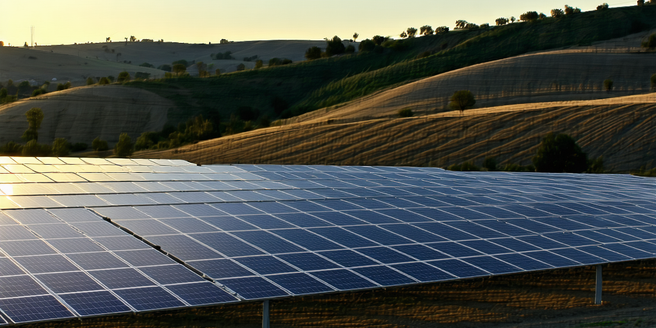
Understanding Sustainable Infrastructure
Sustainable infrastructure refers to the planning, design, and construction of structures and systems that are environmentally responsible and resource-efficient. This approach encompasses a wide range of sectors, including transportation, water management, energy, and waste management. It aims to minimize negative impacts on the environment, enhance social equity, and ensure economic viability. To achieve this, sustainable infrastructure integrates innovative technologies and practices that reduce carbon emissions, minimize waste, conserve natural resources, and promote biodiversity. By prioritizing long-term impacts over short-term gains, sustainable infrastructure seeks to create resilient communities that can withstand environmental challenges. The collaboration of governments, businesses, and communities is crucial in this process, ensuring that infrastructure developments cater to both current needs and future sustainability.
Benefits of Sustainable Infrastructure
Sustainable infrastructure offers a multitude of benefits that extend across environmental, social, and economic dimensions. Environmentally, it reduces greenhouse gas emissions, decreases pollution, and minimizes dependence on finite resources by promoting renewable energy sources and efficient waste management systems. Socially, it enhances the quality of life by creating healthier living environments, improving access to essential services, and fostering inclusive communities. Economically, sustainable infrastructure can lead to significant cost savings over time by reducing operational and maintenance expenses, while simultaneously driving innovation and job creation in green industries. Moreover, it contributes to increased resilience against climate change and extreme weather events. The investment in sustainable infrastructure represents a commitment to a sustainable future, balancing the needs of the present without compromising the ability of future generations to meet their own needs.
Key Components of Sustainable Infrastructure
Key components of sustainable infrastructure include energy efficiency, renewable energy integration, green buildings, and sustainable transportation systems. Energy efficiency involves designing systems and processes that consume less energy, such as advanced heating, cooling, and lighting technologies. Incorporating renewable energy sources like solar, wind, and hydropower reduces reliance on fossil fuels and lowers carbon footprints. Green buildings are designed with materials and techniques that improve energy performance and resource conservation, such as insulation, natural ventilation, and water-saving fixtures. Sustainable transportation focuses on reducing emissions and increasing efficiency through public transit systems, bicycle lanes, and electric vehicle charging stations. Beyond technical elements, sustainable infrastructure also involves engaging communities in decision-making processes to address their specific needs and priorities. By integrating these components, societies can build modern infrastructure that is resilient, efficient, and adaptable to future challenges.
Current Trends in Sustainable Infrastructure
The current trends in sustainable infrastructure highlight a shift towards incorporating smart technologies and nature-based solutions. The rise of smart cities exemplifies this trend, where digital tools and data analytics are used to optimize the efficiency of urban systems, from energy grids to transportation networks. These technologies enable real-time monitoring and management, resulting in reduced energy consumption and improved service delivery. Nature-based solutions, such as green roofs, urban forests, and rain gardens, are increasingly being integrated into urban planning to address challenges like stormwater management and urban heat islands. Additionally, the emphasis on circular economy principles is growing, promoting resource recovery and waste minimization. These trends are driven by the urgent need to combat climate change and build resilient infrastructures that can adapt to an evolving global landscape.
Challenges in Implementing Sustainable Infrastructure
Implementing sustainable infrastructure faces several challenges, including high upfront costs, regulatory hurdles, and limited public awareness. The initial investment required for sustainable materials and technologies can be a significant barrier, especially for developing nations with constrained budgets. Regulatory challenges also arise as current planning and building codes may not accommodate innovative sustainable practices, necessitating updates and reforms. Furthermore, a lack of awareness and understanding among the general public and decision-makers can slow the adoption of sustainable initiatives. Another obstacle is the need for interdisciplinary collaboration among architects, engineers, environmental scientists, and policymakers to ensure seamless integration of sustainability principles into infrastructure projects. Overcoming these challenges requires government support through incentives and policies, public-private partnerships, and educational campaigns that highlight the long-term benefits and cost savings of sustainable infrastructure.
Future Prospects for Sustainable Infrastructure
The future prospects for sustainable infrastructure are promising, driven by technological advancements and global commitments to environmental sustainability. Innovations in materials science and engineering are paving the way for the development of more efficient and durable building materials. The rise of artificial intelligence and the Internet of Things (IoT) offers new possibilities for monitoring and optimizing infrastructure performance in real-time, enhancing energy efficiency and reducing maintenance costs. Moreover, international agreements, such as the Paris Agreement, are pushing nations to adopt more stringent environmental standards, accelerating the transition to green infrastructure. As cities continue to grow, there is an increasing focus on developing sustainable urban environments that prioritize public transport, green spaces, and resource efficiency. The collaboration between governments, industries, and communities will be pivotal in driving the widespread adoption of sustainable infrastructure, ultimately contributing to a more resilient and sustainable world.
